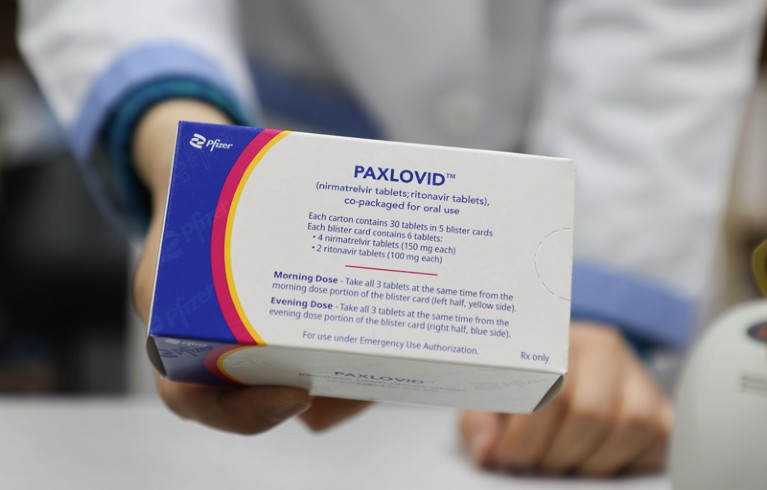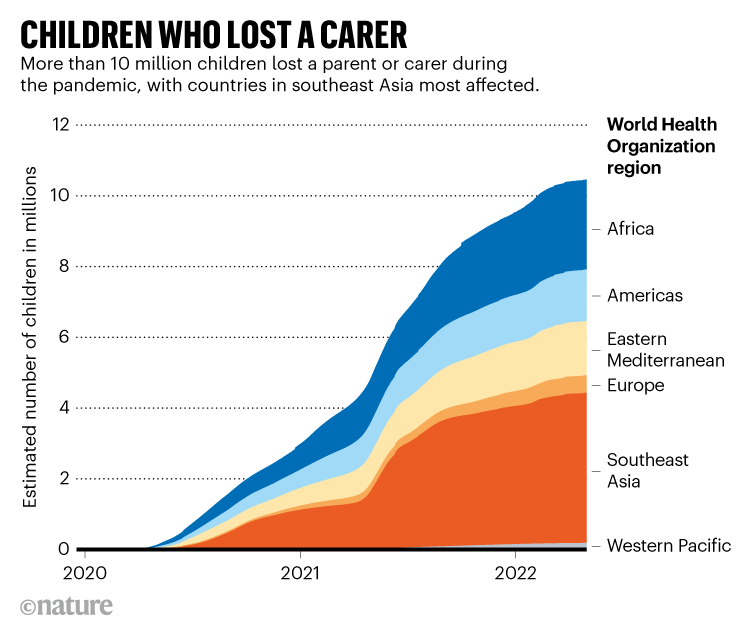[ad_1]

The Quick Start consortium will distribute 100,000 courses of the antiviral drug Paxlovid in ten countries.Credit: BJ Warnick/Yonhap/Newcom/Alamy
COVID drugs donated to poor countries
A programme to bring oral COVID-19 antivirals to low- and middle-income countries has launched with an initial donation of 100,000 courses of treatment, to be distributed in 9 sub-Saharan African countries and Laos.
By the end of September, the COVID Treatment Quick Start Consortium aims to begin treating people in these countries with Paxlovid (nirmatrelvir–ritonavir), an antiviral drug developed by Pfizer in New York City. The programme is backed by non-profit organizations such as the Clinton Health Access Initiative, Americares and the COVID Collaborative, along with Duke University in Durham, North Carolina, and other partners.
The size of the donation is dwarfed by the need in these ten countries: limited supplies and high costs have restricted the flow of COVID-19 antivirals to low- and middle-income regions. “It’s a diabolically horrible situation in terms of equitable access to therapies,” says Rachel Cohen, a regional executive director at the Drugs for Neglected Diseases Initiative, which is headquartered in Geneva, Switzerland.
The consortium will establish pilot projects to explore how best to implement test-and-treat programmes in areas with limited health-care infrastructure. Over time, the consortium plans to expand the programme to more countries and transition to lower-cost, generic versions of Paxlovid.

The ITER fusion reactor is currently under construction in France.Credit: ITER Organization
World’s largest fusion experiment appoints new chief
Pietro Barabaschi, an electrical engineer who has spent his entire career in fusion research, has been selected to lead ITER, the world’s largest nuclear-fusion experiment.
Barabaschi is currently acting director of Fusion for Energy, the body responsible for Europe’s ITER contribution, and will take over as ITER’s director-general in October.
ITER, based in southern France, aims to demonstrate the feasibility of fusion power, the energy source behind the Sun that promises near-limitless clean energy. The US$22-billion project — a collaboration between China, the European Union, India, Japan, Korea, Russia and the United States — has faced a series of management issues, delays and spiralling costs. Although ITER is currently scheduled to begin operations in 2025, that date is likely to be pushed back following a review of its timetable that will account for delays caused by the COVID-19 pandemic.
In a statement, Barabaschi pledged to make it a priority as director-general to improve the integration of the central ITER Organization with the agencies that provide each member’s contribution.
COVID deaths: more than ten million children lost a parent or carer
Roughly 10.5 million children worldwide have a parent or carer who died from COVID-19, finds a modelling study. The figure is a dramatic increase on previous estimates. India, Indonesia and Egypt were the nations most affected; other regions throughout Africa and southeast Asia were also badly hit (S. Hillis et al. JAMA Pediatr. https://doi.org/gqr2w3; 2022).
The study is the third update of the number of children left orphaned because of the pandemic. Earlier studies estimated that around 1.5 million children under 18 years old had lost a primary or secondary carer during the first 14 months of the pandemic. A year later, estimates are an order of magnitude greater, says co-author Susan Hillis, an epidemiologist at the University of Oxford, UK.
“I really appreciate this team’s effort to try to keep the issue of COVID-related orphans in front of the research and policy communities,” says Michael Goodman, an applied social epidemiologist at the University of Texas in Galveston. “We as a society are not off the hook for these children.”
The authors factored in excess-deaths data from the World Health Organization, the Institute for Health Metrics and Evaluation in Seattle, Washington, and newspaper The Economist, along with fertility rates — which gave them an idea of how many children were affected by each death in a given country. Excess deaths are the difference between anticipated deaths and those observed in a given period, in this case from 1 January 2020 to 1 May 2022.
The model suggests that 7.5 million children lost one or both parents, and 10.5 million children lost either parents or carers. Hillis says that estimates increased as more COVID-19 testing became available, and as more lower- and middle-income countries reported data throughout the pandemic.
Losing a parent or carer can inflict lifelong consequences. The children affected are more likely than others to experience mental-health problems, abuse and chronic illness.

Source: S. Hillis et al.
[ad_2]
Source link

